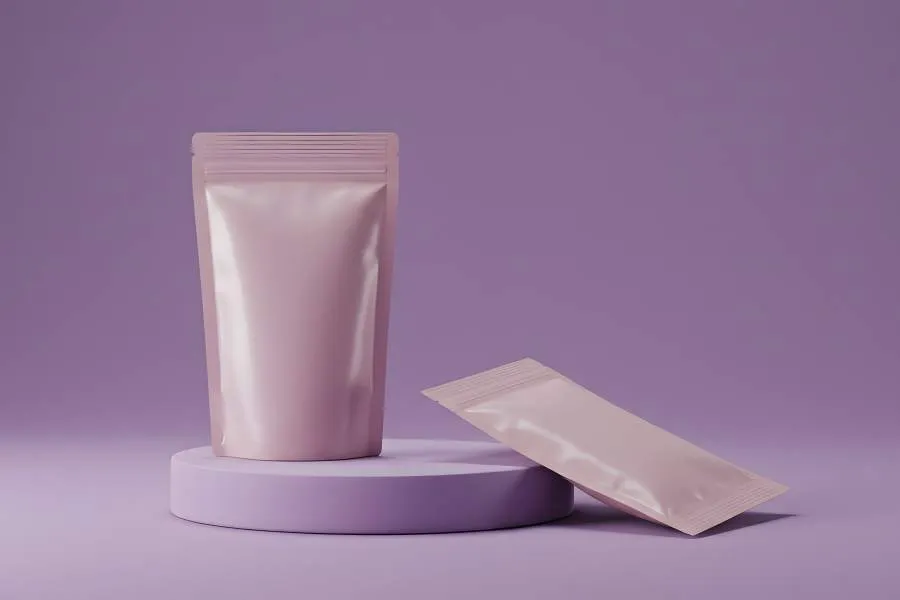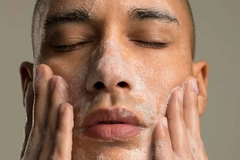Keeping consumers through cross-industry collab: Eastman shares 2026 beauty trends
Key takeaways
- Eastman’s research reveals strong consumer demand for sustainable beauty products, with many willing to switch brands for biodegradable solutions.
- The company emphasizes the need for innovation to meet rising regulatory standards, particularly the EU microplastic ban.
- Eastman highlights its biodegradable cellulose esters as alternatives to microplastics in cosmetics, aligning with consumer preferences and regulatory requirements.
Consumers and regulators are driving the need for sustainable beauty innovation, making it an essential demand for companies to meet. Eastman’s research for 2026, which shows a higher-than-expected consumer openness to sustainable solutions, even if it means switching brands. It found that collaboration and innovation are crucial for brands to meet rising expectations.
Personal Care Insights speaks with Lauren Leonard, market development manager at Eastman, who takes us through the company’s forecast for formulation science in 2026 and how brands can “stay ahead of the curve.”
“Eastman’s consumer research underscores a strong demand for sustainable beauty solutions that deliver on performance. In a survey of 4,000 women aged 16–70 across the US, UK, Brazil, France, and Germany, respondents expressed a strong interest in biodegradable ingredients and a willingness to shift their purchasing behavior toward brands that incorporate them.”
Leonard says the findings show that 75% of US consumers and 74% of European consumers are interested in purchasing color cosmetics formulated with biodegradable microbeads, demonstrating a growing appetite for sustainable alternatives that reduce environmental impact.
“Even more striking, 90% of respondents in the US and 89% in Europe indicated they would try a brand they’ve never used before to access such products, signaling a strong willingness to break beyond brand loyalty when sustainability is prioritized,” she says.
The research also highlights that fewer than half of consumers are satisfied with the long wear of their current products (41% in the US and 39% in Europe).
“This highlights an important opportunity for innovation. Consumers are eager for biodegradable beauty solutions, but only if they can match or exceed the performance they expect,” says Leonard.
Tightening regulations
The EU is tightening its regulations with the EU Deforestation Regulation coming into effect this year, and the microplastic ban, which took effect in October 2023, and will have stricter regulations in 2027.
The microplastic ban, Regulation (EU) 2023/2055, restricts the use of synthetic polymer microparticles (microplastics) in cosmetic products placed on the EU market. Leonard explains that this regulation aims to reduce environmental microplastic pollution, signaling a broader industry shift toward greater transparency and product safety.
 Eastman’s consumer research across major markets reveals strong interest in biodegradable solutions.“To adapt, brands must invest in R&D to identify and integrate biodegradable alternatives in their products to comply with regulations and meet consumer expectations for performance and sustainability,” says Leonard.
Eastman’s consumer research across major markets reveals strong interest in biodegradable solutions.“To adapt, brands must invest in R&D to identify and integrate biodegradable alternatives in their products to comply with regulations and meet consumer expectations for performance and sustainability,” says Leonard.
She adds that amid “fierce” competition in the beauty industry, providing products with verifiable sustainable attributes that perform as well as, or better than, conventional formulations is essential to establishing consumer trust and long-term loyalty.
Eastman’s consumer research across major markets reveals strong interest in biodegradable solutions, with 68% of consumers in the US and 69% in Europe indicating that they would be willing to pay more for cosmetics containing biodegradable microbeads. This underscores that sustainability is viewed as a value driver rather than a trade-off.
“Rising consumer awareness of the environmental and safety risks of microplastics, together with tightening regulations, creates an opportunity for brands to pursue bold innovation by integrating high-performance biodegradable solutions into their formulations,” says Leonard.
Alternative to microplastics
Cosmetic products incorporate a variety of ingredients into their formulations to create the textures and finishes consumers want, such as velvety smoothness, a soft matte finish, or a dewy glow.
Leonard says that traditionally, synthetic polymers, such as nylon-12, have been used to achieve these effects.
“Biodegradable cellulose esters can provide comparable performance to conventional microplastic ingredients while helping brands meet their sustainability objectives and regulatory requirements.
She exemplifies the company’s Esmeri CC1N10. It is a readily biodegradable cellulose ester micropowder, as per the biodegradation test OECD 301B, and is specifically designed for use in color cosmetics. The ingredient is made from 63% sustainably sourced wood pulp, enabling brands to transition away from microplastics without compromising product performance or sensory experience.
“Designed for versatility, Esmeri CC1N10 is stable and compatible with a wide range of lipophilic cosmetic formulations and applications,” says Leonard.
“As a non-nano ingredient, it delivers desirable optical and sensory benefits formulators expect, such as soft-focus optical effects, enhanced color intensity and payoff, uniform coverage, optimal compaction, and desirable pickup performance.”
Preparing for regulations
Ingredient suppliers play a crucial role in helping brands prepare for regulations through collaboration and forward-looking innovation.
“At Eastman, our innovation is grounded in core technologies, driven by alignment with evolving regulations, brought to life through prototype concepts to inspire brands, and supported by comprehensive ingredient documentation for compliance,” says Leonard.
She shares that Eastman’s continued investment in R&D is used to develop safe, biodegradable alternatives and to advance high-performance ingredients that meet microplastic regulations and fulfil brand expectations.
“Beyond ingredient innovation, Eastman partners proactively with brands — offering comprehensive technical guidance, formulation expertise, and transparent, verifiable performance data — to accelerate the development of compliant, more-biodegradable products,” adds Leonard.
 Ingredient suppliers play a crucial role in helping brands prepare for regulations.One of the biggest challenges in formulating sustainable beauty is not to compromise the product’s performance. From surfactants to emollients, brands are shifting their focus to reduce carbon footprints, prevent deforestation, and ensure that raw materials originate from renewable and traceable sources. For ingredient manufacturers, this means rethinking how products are designed, produced, and scaled.
Ingredient suppliers play a crucial role in helping brands prepare for regulations.One of the biggest challenges in formulating sustainable beauty is not to compromise the product’s performance. From surfactants to emollients, brands are shifting their focus to reduce carbon footprints, prevent deforestation, and ensure that raw materials originate from renewable and traceable sources. For ingredient manufacturers, this means rethinking how products are designed, produced, and scaled.
“Leveraging more than a century of expertise in cellulosic technology, Eastman applied its deep understanding of cellulose chemistry to design ingredients that combine biodegradability with the high-performance optical, sensory, and functional benefits formulators and consumers expect,” says Leonard.
By providing clear communication and comprehensive supporting documentation for ingredients, Eastman may enable brands to confidently showcase the benefits of their ingredients in formulations while meeting industry requirements.
“This approach ensures our partner brands remain compliant while being well-positioned to innovate and meet their 2026 sustainability targets,” she says.
Collaboration is key
The company stresses that effective collaboration between brands and material suppliers is a catalyst for more sustainable product innovation.
“By supporting brands’ formulation goals, navigating regulatory requirements together, and scaling development efforts appropriately, brands and suppliers can combine expertise to deliver market-ready products that satisfy consumers and meet regulations,” says Leonard.
Partnerships can shorten the path from concept to commercial launch and drive practical solutions to meet market demands.
Close supplier–brand collaboration enables shared market insights, improves foresight into regulatory developments and evolving environmental expectations, and sparks innovations that can differentiate products in the market.
“For example, Eastman’s forward-looking efforts in biodegradable solutions, underpinned by comprehensive performance evidence, illustrate how suppliers can support brands to shorten product formulation timelines without compromising performance expectations,” Leonard concludes.














